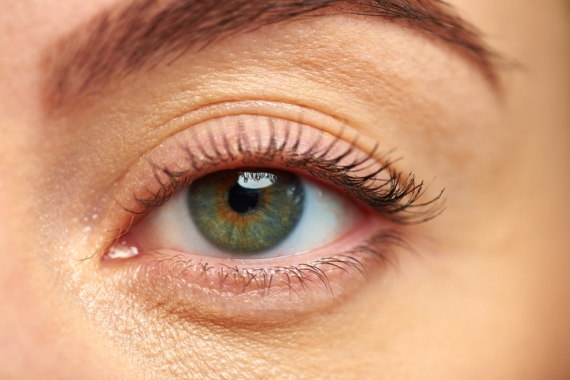Upper Blepharoplasty
If your upper eyelids have a hooded appearance and feel heavy or droopy, you have eyelid droop, a condition which affects people of all ages. It can also affect the lower eyelids as well. Upper eyelid droop can be surgically corrected by a procedure known as upper blepharoplasty. Our Elmquist Eye Group surgeon, Dr. Rodriguez, is one of the best at diagnosing this condition and performing the corrective surgery.
What is blepharoplasty?

Blepharoplasty is a surgical procedure used to restore the upper eyelids to a more natural position. At an initial consultation at Elmquist Eye Group, our team will learn about your detailed medical history, which can help them understand possible underlying causes of your eyelid droop. They will take the medical history and severity into consideration when recommending one of several treatments. We often see patients with minor cases of eyelid droop that do not interfere with vision; in these cases, no treatment may be needed. In some cases, our team may recommend that you wear specialized glasses to help support the eyelids. However, in most cases of eyelid droop, the doctor will recommend surgery because it is a progressive condition that will only worsen over time. Fortunately, most patients are good surgical candidates.
Is the surgery risky?
Most surgeries carry some degree of risk, but upper blepharoplasty is a very low risk surgery. Common issues associated with the surgery include dry eye, a scratched cornea or a hematoma.
Upper blepharoplasty is an outpatient procedure. We use a local twilight anesthesia so that you will remain comfortable throughout the entire procedure. The surgeon takes about 20 minutes to correct each lid, and both upper lids can be corrected at the same time. We can also do both lower lids at the same time, too.
The surgeon creates an upper eyelid incision along the eyelid’s natural crease, then tightens the small levator muscle to create lift in the lid. Quite frequently, the surgeon also repositions fat to make the lid appear more natural, and may even remove excess skin from the lid. The surgeon then uses very fine sutures to close the incision.
Is the recovery from this surgery easy?
Recovery from upper blepharoplasty is very easy. For about a week, we want you to sleep with your head slightly elevated; this reduces the swelling that occurs post-surgery. Do not sleep on your face. Most of our patients experience mild to moderate swelling; day two is the worst day for swelling, which subsides fairly rapidly on the following days. Bruising is also minimal.
Most patients experience minimal pain which subsides about two or three days after the surgery. Most patients report that they don’t even need any pain medication, but if you do, over-the-counter Tylenol can easily control the pain.
The day after your surgery, you will need to come in for a follow-up appointment so that we can check your progress and healing. About six days after surgery, we will remove the sutures, then you can resume normal activities and even wear makeup.
Trust in Elmquist
If you are having eyelid issues, you can trust the professionals at Elmquist Eye Group to do a thorough exam and a safe, effective upper blepharoplasty. If your droopy eyelids are interfering with driving or reading, don’t suffer any longer. Call us today to make an appointment at Elmquist Eye Group.
